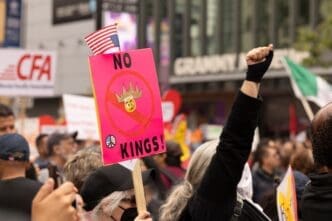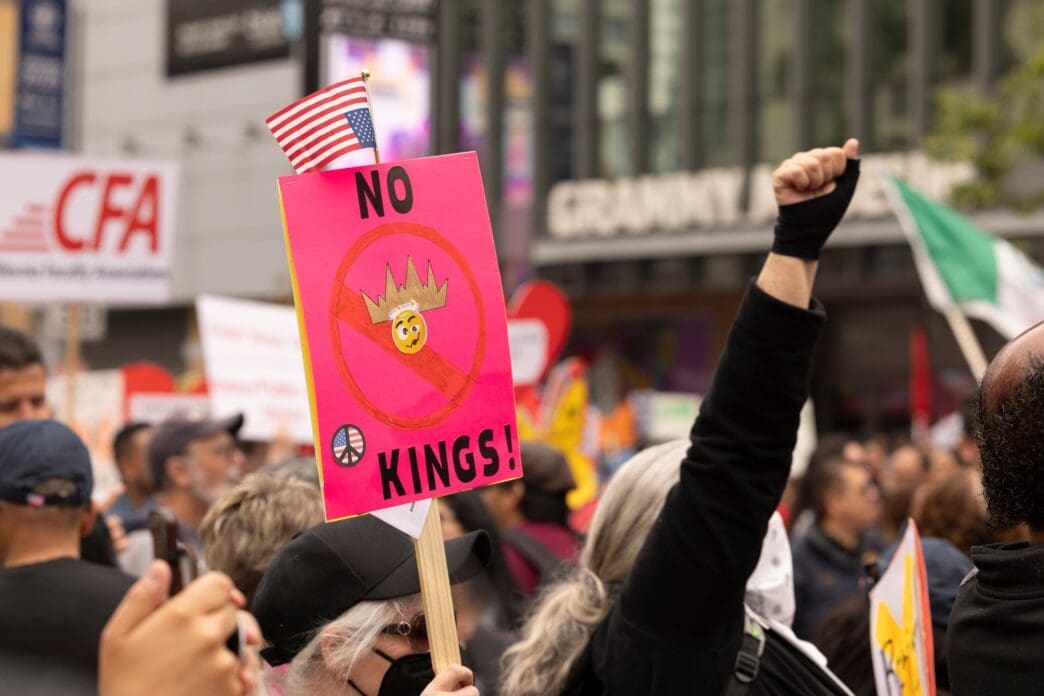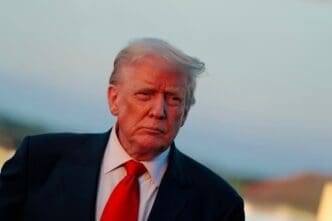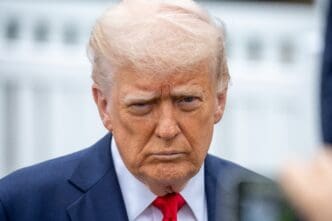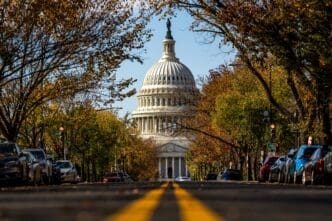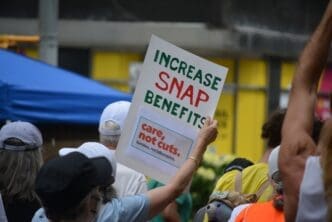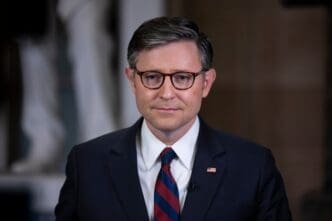Executive Summary
The Story So Far
Why This Matters
Who Thinks What?
Millions of people across the United States participated in over 2,700 “No Kings” rallies on Saturday, October 19, 2025, protesting against what organizers described as President Donald Trump’s “authoritarian” agenda. The nationwide demonstrations, which saw nearly 7 million attendees, focused on concerns over threats to democracy, free speech, immigration policies, and cuts to federal programs.
Protest Turnout and Scope
The rallies took place in major cities like New York, where over 100,000 people gathered, as well as in smaller towns and along busy thoroughfares across both red and blue states. This round of protests significantly surpassed previous gatherings in June, which saw approximately 5 million people protest the Trump administration during a military parade in Washington.
Organized by the Indivisible Project, the events were largely peaceful, though isolated incidents of individuals targeting protesters were reported. Organizers stated their commitment to nonviolent action, having trained tens of thousands in safety and de-escalation methods amidst growing political violence.
Democracy at Stake
A central theme for many demonstrators was the perceived threat to American democracy. Protesters voiced fears that President Trump’s actions were dismantling democratic institutions and expanding executive power.
Peggy Cole, a retired government worker who traveled from Michigan to Washington, D.C., for the protest, expressed concern that Trump was “taking our government, our democracy, and dismantling it piece by piece.” Similarly, a New York protester, who asked not to be named, highlighted that unlike past movements focused on expanding rights, current efforts are aimed at preventing the erosion of fundamental democratic tenets like the press and the judiciary.
In Atlanta, Democratic Sen. Raphael Warnock emphasized that the message of the protests was clear: “This is not about the people in power, it’s about the power in the people.” Kimberly Diemert, an organizer for the Georgia chapter of 50501, reminded the crowd of Atlanta’s legacy as the “cradle of the Civil Rights Movement as well as democracy.”
Concerns Over Free Speech
Demonstrators also raised alarms about what they perceived as a threat to freedom of expression in the United States. Bobbie Castillo, attending her first protest in Washington, D.C., after traveling from Nebraska, noted a fear of repercussions for expressing dissent.
Bill Nye, “The Science Guy,” speaking at the D.C. protest, asserted that Trump and his associates “cannot tolerate dissent” and were attempting to silence critics. Participants in smaller cities, such as Ashland, Oregon, described the day as a “joyful celebration of our love for America, for free speech, for the importance of community.”
Immigration Policies and Federal Overreach
Many attendees linked their participation to the administration’s immigration crackdown, including mass raids and the deployment of federal troops to Democratic-led cities. Protests against federal immigration enforcement had previously erupted in cities like Los Angeles and Portland.
In Los Angeles, where federal raids triggered significant demonstrations, protesters called for immigrant rights and an end to deportation campaigns. Gilberto Beas, sitting outside LA’s City Hall, stated the protest was “a message for ICE to stop doing what they’re doing.”
Actor John Cusack, addressing the Chicago protest, criticized the deployment of troops on city streets, stating, “No, you can’t put troops on our streets. You can’t create enough chaos to invoke the Insurrection Act so you can stay in power.”
Cuts to Federal Programs
Concerns about cuts to federal programs, particularly healthcare, were also a significant motivator for protesters. These rallies occurred amidst a federal government shutdown, with Republicans and the White House in a standoff with Democrats over a funding bill.
Danielle Guinto, a mother of two at the Chicago demonstration, expressed worries about the impact of federal changes to Medicaid and rising costs of living on families. Anthony Lee, a furloughed federal worker and union president, highlighted the “destruction” of public services and the “demonization” of federal employees.
Sen. Bernie Sanders, speaking in D.C., connected these issues to broader economic inequalities, stating, “This is about a handful of the wealthiest people on Earth who, in their insatiable greed, have hijacked our economy and our political system.”
Key Takeaways
The widespread “No Kings” protests underscore a broad public sentiment of concern regarding the direction of American democracy, free speech, immigration enforcement, and social welfare programs under the Trump administration. Demonstrators across the country voiced a unified call for accountability and the preservation of democratic institutions.

